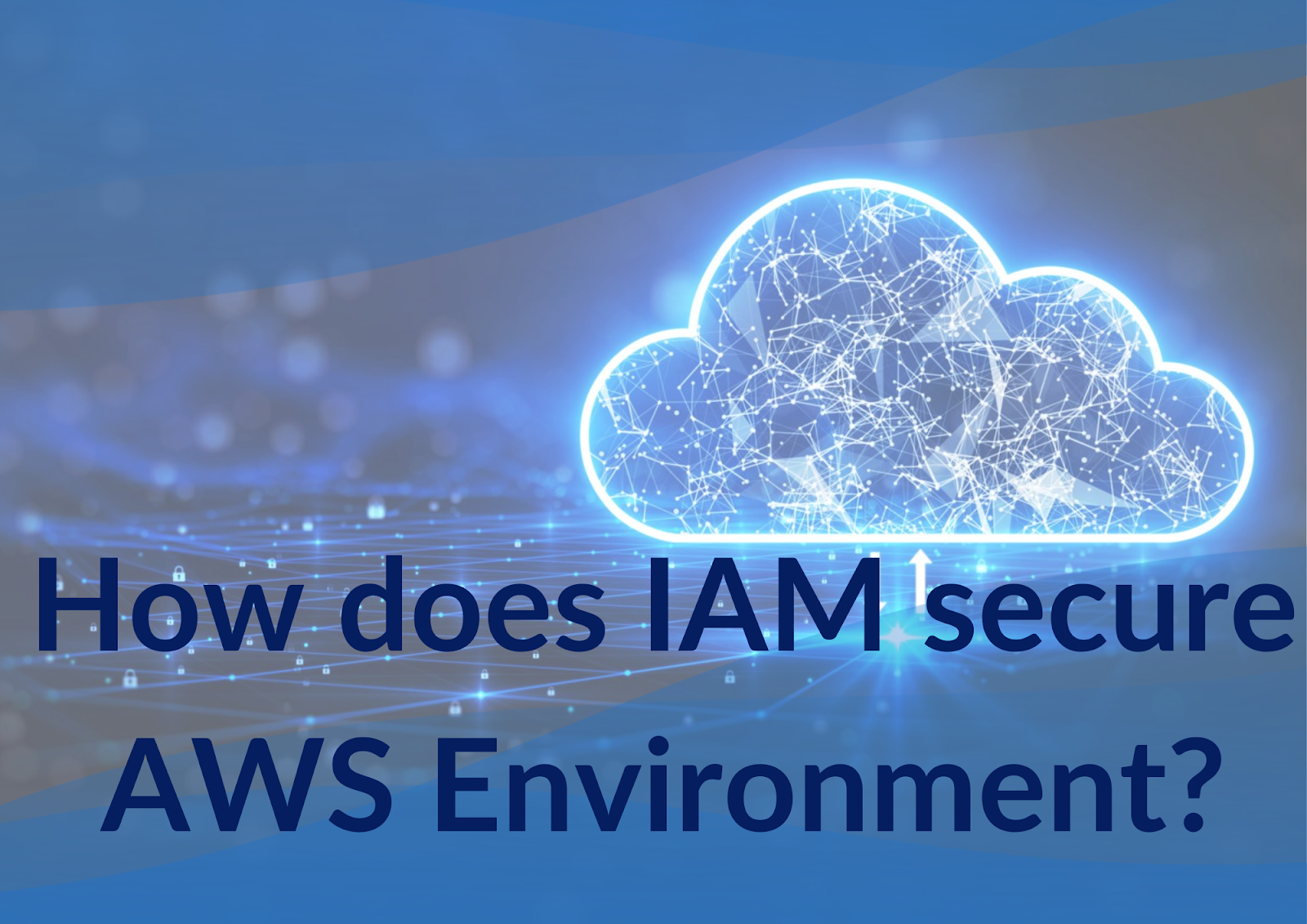How does IAM secure AWS Environment?
 Priya Raimagiya
Priya Raimagiya
Validating cloud environment safety is crucial in today's era, no matter the size of an organization. With the acceleration in cloud computing adoption, specifically Amazon Web Services, maintaining security is crucial for every business. Thus, Securing AWS with IAM becomes pivotal. IAM plays the role of gatekeeper for AWS infrastructure. With the implementation of IAM best practices, businesses can protect sensitive data, mitigate risk, and ensure compliance with standards. Read the AWS IAM security guidelines this blog covers and protect your AWS resources.
What is IAM in AWS?
IAM in AWS(Identity and Access Management) is a service that safeguards access to AWS resources. It adequately manages permissions, allowing only authenticated and authorized users to access the cloud assets. The role of IAM in AWS is just a game-changer!
Envision AWS as a giant soccer field containing precious data. We have one proficient goalkeeper named IAM. When a skilled attacker bypassed all the security systems just like a sneaky player tried to kick the ball toward the goal, Our goalie appeared as a lifesaver by throwing up strong rules like policy blocks and other security checks like multi-factor saves. Our goalie generated a buzz among the audience. Like a goalkeeper, IAM secures the data and makes our team win!
Welcome to the battlefield where AWS IAM is your sword and shield!
Top 5 AWS IAM Security Guidelines
AWS IAM Security operates on two vital security principles: zero trust, which emphasizes continuous verification and assumes breach possibilities, and least privileged access, which limits access to only what is important for the task at hand. Let’s dive deeper into how IAM secures AWS environment with its best practices:
Identity Provider for AWS access
Your workforce, which administers, operates, develops, and uses your application, is called human identities or users. Workforce identities are a different acronym for human users who work with your organization. They are required to have an identity to access your AWS application and environment. External users who collaborate with your business might also be human users and utilize AWS resources. Your workforce will require temporary credentials and an identity provider can be used to leverage federated access to accounts. You can utilize an IAM Identity Center for overall access management.
Workload utilizes temporary credentials alongwith IAM roles to access AWS
A workload is a compilation of code and resources that leverage business value. It might have operational tools, components, and applications that must have an identity to submit a request to AWS services. IAM roles can be used to provide machine identities for workloads. IAM roles have particular permissions and a specific way of accessing AWS resources. They rely on temporary credentials alongside a role session. Identity and Access Management Roles Anywhere can be used for machines outside AWS.
From AWS Managed Policies to Least Privileged Permissions
AWS-managed policies, present in your AWS account, can be used to grant permissions to your workload and users. Customer-managed policies should be utilized to grant least-privileged permissions, as AWS-managed policies might not perform that task for your use cases sometime.
Update access keys when using long-term credentials
I advise continuing with temporary credentials whenever possible. However, when long-term credentials and programmatic access are crucial, updating the access key is important. IAM access last utilized information can be used to remove and update access keys. Sometimes, temporary credentials using roles can’t be operationalized; at that point, you are required to provide long-term credentials. There are particular cases when you need to go for long-term credentials, such as for third-party AWS vendors or clients not hosted on AWS; you can utilize long-term access keys.
Use Specific Conditions for additional restrictions
You can put conditions on policy statements in practice for further restrictions. Thus, access will be granted only if the request matches specific conditions. Let’s take an example of submitting a request only through SSL; thus, requests received in other ways will be automatically dismissed. Even service action can be restricted through specific conditions.
IAM best practices for AWS security ensure authenticated access in AWS environment. They are not limited to the above-mentioned ones; their AWS Cloud Security has expanded beyond your imagination! Know more about AWS IAM Security best practices, which are truly a game-changer.
IAM Features
This section precisely describes AWS IAM Security features:
AWS Security Token Services and Identity Access Management are free to employ.
AWS IAM is blended with numerous AWS services.
IAM-supported transmission, processing, and storage of merchant-provided data comply with PCI and DSS.
User Identity can be assured if you utilize AWS Cloud Trail, which contains information about request submission; this information is based on IAM identity.
Identity federation is possible by allowing a user with a password to have temporary access.
Multi-factor authentication (MFA) in AWS IAM adds extra security to individual users and your account. In MFA, not only an access key or password but also a code from a device specifically configured allows additional layers of security.
Final Thoughts
In a phenomenon where data is new oil,role-based access control in AWS IAM keeps your data protected. IAM access control for AWS resources provides overall security to AWS environment. Furthermore, IAM user management best practices allow you to strengthen your shield to protect AWS resources. AWS consulting services provided by top AWS consulting firms build the wall that restricts the potential threat of unauthorized access.
Subscribe to my newsletter
Read articles from Priya Raimagiya directly inside your inbox. Subscribe to the newsletter, and don't miss out.
Written by
